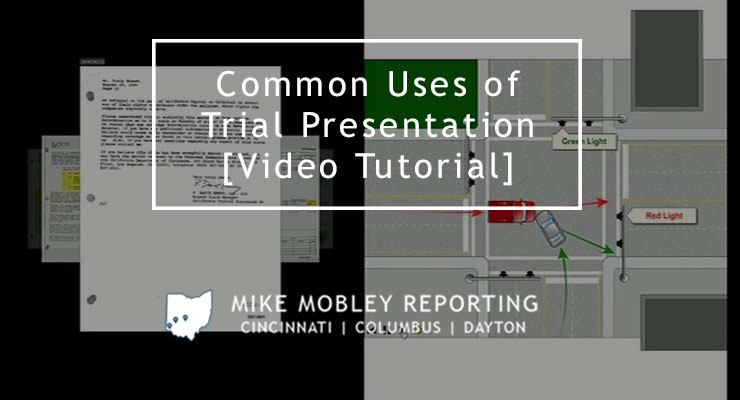Exactly How to Craft a Compelling Trial Discussion That Wins Situations
In the world of test advocacy, the ability to craft a compelling presentation is extremely important to securing favorable outcomes. A successful trial discussion calls for a nuanced understanding of the jury's demographics and predispositions, together with a carefully structured story that seamlessly incorporates factual proof and psychological vibration.
Understand Your Target Market
Recognizing your target market is a critical component of crafting a reliable trial presentation. The jurors, courts, and various other participants in a test come from varied histories, each having special experiences and perspectives. It is crucial to tailor your discussion to resonate with these people.

Furthermore, comprehending the psychological and cognitive factors that influence decision-making is vital. Jurors are typically swayed by emotional charms and storytelling, making it vital to connect with them on a human degree. By mounting your disagreements in such a way that straightens with their values and experiences, you can enhance involvement and convince them properly. Inevitably, a well-considered technique to target market understanding can significantly affect the outcome of your presentation and, consequently, the test itself.
Framework Your Story
A well-structured narrative works as the backbone of an engaging test presentation. It provides a clear structure that guides jurors with the intricacies of the situation while highlighting the essential debates. Trial Presentations. To achieve this, start with an engaging opening declaration that outlines the main motif and sets the tone for the presentation. This first involvement is important for recording the court's focus and promoting their interest.
Following, present the truths in a logical sequence, ensuring that each piece of evidence builds on the previous one. This chronological development aids jurors comprehend the context and importance of each fact, consequently reinforcing your disagreement. It is vital to weave in emotional aspects that reverberate with the jury, as this can stimulate empathy and support for your placement.

Conclude with a compelling closing statement that states your major points and leaves a lasting perception. Sum up the key takeaways and make a solid charm for the preferred verdict. By structuring your narrative efficiently, you can produce a persuasive test presentation that not only notifies yet likewise astounds and affects jurors in your support.
Utilize Visual Aids
Incorporating aesthetic help right into your test discussion enhances the jurors' understanding and retention of info. Efficient use aesthetic aids can simplify intricate data, making it a lot more easily accessible and appealing for the jury. Charts, graphs, timelines, and photographs function as effective tools to show vital factors and reinforce your story.
When picking visual help, ensure they are pertinent and straight support your case. Each aesthetic should be clear, expertly designed, and simple to comprehend at a look.

Technique Effective Delivery
Practicing efficient distribution is crucial for making a long-term impression during a trial presentation. The way in which you communicate your disagreements can significantly influence the jury's understanding and understanding of your situation.
In addition, preserving eye call with jurors promotes connection and involvement. Stay clear of checking out directly from notes; instead, familiarize on your own with the material to ensure an extra all-natural shipment. Practice before coworkers or use videotaping tools to review your performance and adjust as necessary.
Incorporating storytelling methods can likewise improve your discussion, making it more relatable and remarkable. Usage stops properly to highlight key points and permit the jury to assess the details presented.
Anticipate Questions and Arguments
Efficient delivery sets the stage for an engaging test presentation, however anticipating questions and arguments is just as essential in safeguarding the court's self-confidence. By planning for possible queries and challenges, lawyers can produce an extra influential narrative and demonstrate their command over the case.
Begin by determining the most likely questions the jury might have worrying key proof, witness reliability, or legal principles. Formulating clear, concise responses beforehand will not just boost your disagreement but also display your preparedness. Think about common objections from the opposing advice-- whether regarding the admissibility of proof or the significance of particular points-- and prepare my website counterarguments that successfully deal with these worries.
Furthermore, preserve a versatile way of thinking during the presentation. Take notice of jurors' non-verbal cues; their body movement may show confusion or skepticism. Being attuned to these signals permits real-time changes to your delivery, offering quality when necessary.
Inevitably, preparing for inquiries and objections transforms prospective weak get more points into strengths, strengthening your position and instilling better count on the court. This aggressive technique not only improves your integrity but additionally adds dramatically to the general efficiency of your test presentation.
Conclusion
An engaging test discussion requires a comprehensive understanding of the target market, a well-structured story, and the strategic use aesthetic aids. Efficient delivery, characterized by confident body language and purposeful juror involvement, boosts the general effect. In addition, anticipating concerns and arguments ensures preparedness and adaptability in the court. Collectively, these aspects add considerably to forming jury assumptions and influencing instance results, highlighting the relevance of thorough prep work in the art of test presentation.